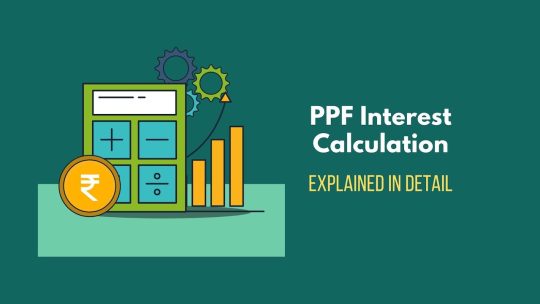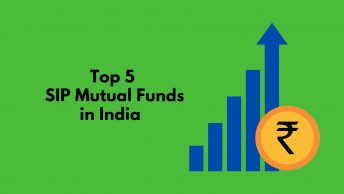Gold is a go-to investment for Indians. Be it gold jewelry, gold coins, or biscuits, gold is consumed in every form. Every auspicious occasion is marked with the purchase of gold. With the entire world moving towards digitalization, gold in digital forms has been gaining popularity. So here we are to make you understand the difference between three types of gold and present you with the best one. And in the same way, the sovereign gold bond return is equally good.
What is a Physical Gold investment?
Investing in gold has always been one of the most preferred and favored investment options in India. This yellow metal has only seen increasing demand over the years. Gold is usually bought for consumption purposes. It is purchased in the form of jewelry, gold coins, and biscuits. It can be bought directly from a jeweler or a bank with no involvement of an intermediary. Hence there is no counterparty risk. Usually, the purchase of gold is kept confidential, unlike the other forms of investment. However, it is recommended that one keeps all the purchase receipts safely for income tax purposes. The minimum investment in physical gold is high. Investing in physical gold has its drawbacks. The cost of carrying and storing gold is higher. Additionally, physical gold will have high making charges. Moreover, there is always a risk of theft. For purchases above INR 30 lakhs, buyers have to pay a wealth tax.
What is Digital gold?
An alternative to physical gold is digital gold. In India, digital gold can be bought from multiple apps and websites. However, it is offered only by certain companies, namely, Augmont Limited, a joint venture between state-owned Metals and Minerals Trading Corporation of India (MMTC), Produits Artistiques Métaux Précieux, Switzerland (PAMP), and SafeGold brand of Digital Gold India Pvt. Ltd. Investing in digital gold is considered to be a cost-effective and efficient way of investing in gold. This form has its own set of drawbacks. The trading platforms charge 2%-3% as a management fee, storage costs, and insurance. Also, there is no regulatory authority for digital gold platforms to secure the interest of consumers.
What is a Sovereign gold bond?
In November 2015, the Sovereign Gold Bond Scheme was introduced, to offer investors an alternative to physical gold. Over the years, the market has witnessed a considerable decline in the demand for physical gold. SGB not only tracks the export-import value of the asset but also ensures transparency at the same time. SGBs are government securities and are considered safe. Their value is denominated in multiples of grams of gold. SGBs have witnessed a significant increase in investors, with it being considered a substitute for physical gold. It can prove to be the most beneficial instrument if one has to take a long-term call on gold. For the sovereign gold bond returns, you get interested at 2.5% on the invested value, if subscribed through the primary issue. And if subscribed through the secondary market, interest calculation will be based on the face value of the bond and not on the amount invested.
Why choose Sovereign Gold Bond?
- Absolute Safety: Sovereign gold bonds have no risks associated with them, except the market risks. There are no hefty designing or wasting charges here. Moreover, SGBs can even earn interest, unlike physical gold which becomes an idle investment over time.
- Sovereign gold bond return: The current interest rate for SGB is 2.50% per annum on your initial investment. It is paid twice a year. Returns are usually linked to the current market price of gold. Sovereign gold bond returns can be classified into two types – capital gains earned on the maturity of bond and interest earnings disbursed semi-annually.
- Indexation Benefit: Long-term capital gains arising when investors transfer bonds qualify for indexation benefits. There is also a sovereign guarantee on the principal as well as on the interest earned.
- Tradability: You can trade gold sovereign bonds on stock exchanges within a specific date. You can also trade them on the National Stock Exchange or Bombay Stock Exchange, among others after completing five years of investment.
- Hassle-free: Ownership of gold without any physical possession.
- Transferability: Bonds shall be transferable by execution of an Instrument of transfer by the provisions of the Government Securities Act.
- Collateral: Some banks accept SGB as collateral/security against loans pledged in Demat form. Hence, they will treat it as a gold loan after setting the loan-to-value (LTV) ratio to the value of gold. The India Bullion and Jewellers Association Limited determines this.
Comparison between Physical gold vs Gold ETF vs Sovereign gold
| Particulars | Physical Gold | Gold ETF | Sovereign Gold Bond |
| Returns/earnings | Due to the making charges, it is lower than the real return on gold | Less than actual return on gold | Sovereign gold bond returns are much more than the actual return on gold |
| Safety | Risk of theft, wear/tear | High | High |
| Extra charges | Making charges are included and GST | Total expense ratio and tracking error | 100% replication of Gold returns |
| Benefits | No carry benefits | No carry benefits | Fixed interest income |
| Purity | The purity of gold always remains a question | High as it is in electronic form | High as it is in electronic form |
| Gains | LTCG after three years | Long-term capital gain post after three years | LTCG post three years. (No capital gain tax if redeemed after maturity) |
| As loan collateral | Accepted | Not accepted | Accepted |
| Tradability or exit formalities | Restrictive | Tradable on Stock Exchange | Can be traded and redeemed from the 5th year with the government |
| Storage expenditures | High | Minimal | Minimal |
| Limits | No minimum and maximum limit | No minimum and maximum limit | Minimum is 1 gram and maximum is as per the investor |
Recommended Read: Types of bank accounts in India







